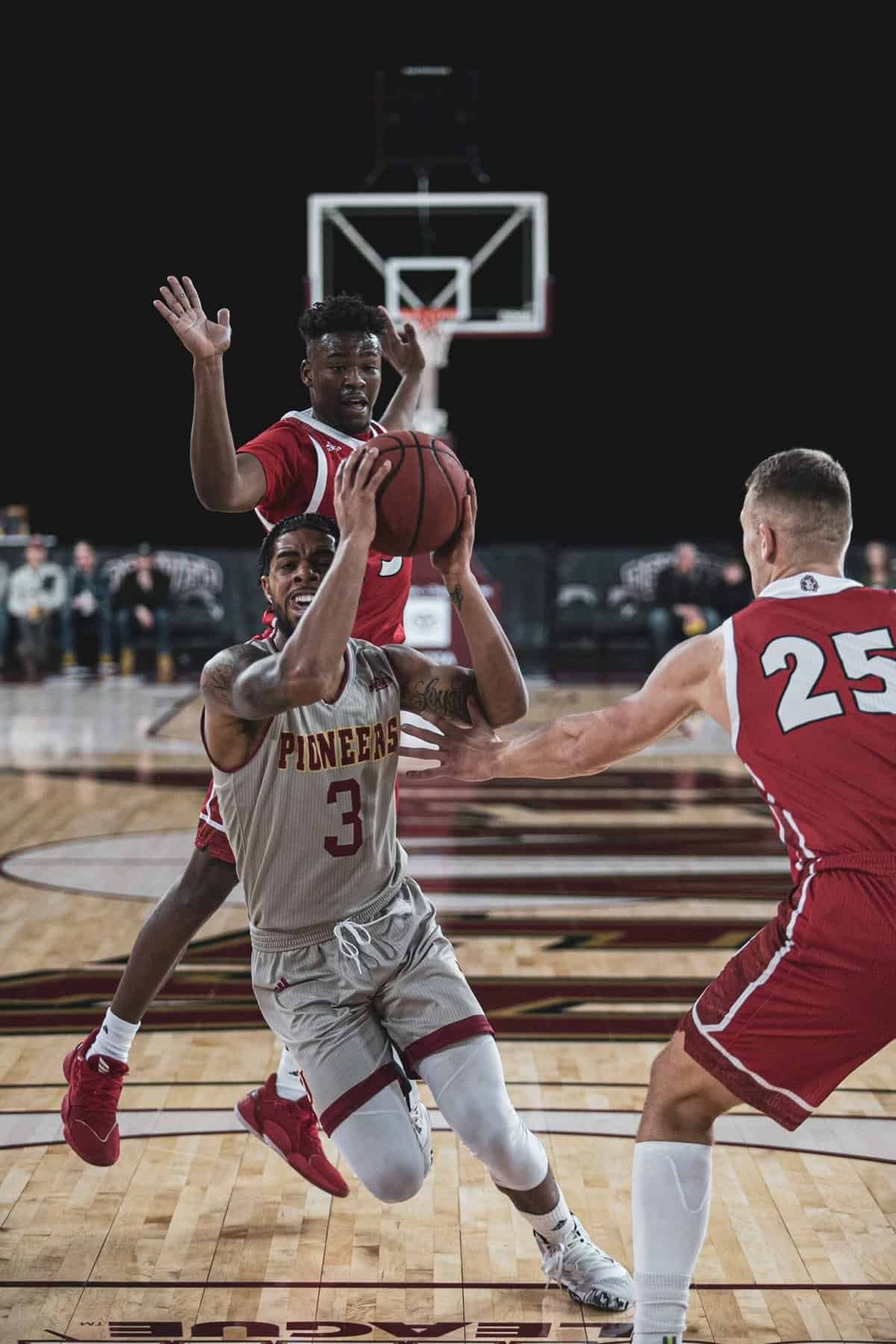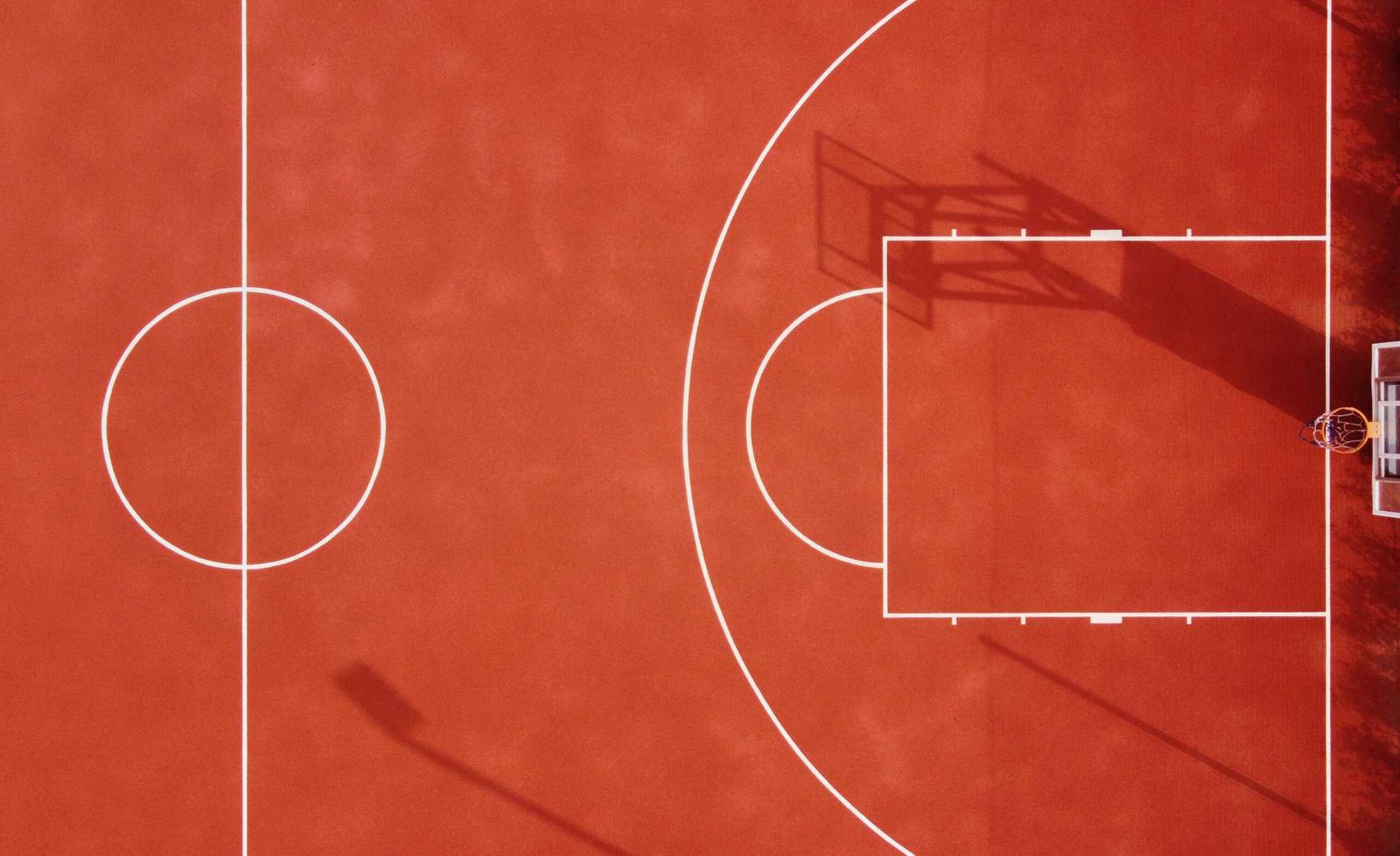You have just stumbled upon a burning question that basketball enthusiasts around the world have been pondering for ages: what is the sacred technique for executing fast-break opportunities? In the exhilarating frenzy of a fast break, time races against you, and the outcome of the game hangs in the balance. Fear not, my friend, for within this article lies the secret recipe for success. Prepare yourself for a whirlwind adventure through the fundamentals and strategies that will unlock the doors to fast-break domination. It is time to master the art of the quick transition and leave your opponents in awe of your lightning speed. Let’s get started, shall we?
Understanding Fast-Break Opportunities
Definition of a Fast-Break Opportunity
In basketball, a fast-break opportunity refers to a situation where a team gains temporary numerical or positional advantage over the opposing team during the transition from defense to offense. It occurs when a team quickly recovers possession of the ball, either from a defensive rebound, steal, or turnover, and rapidly advances it towards the opposing team’s basket before their defense can set up. The aim of a fast break is to capitalize on the advantage by scoring an easy and uncontested basket before the defense has a chance to recover.
Importance of Fast-Break Opportunities in Basketball
Fast-break opportunities play a crucial role in basketball as they offer teams a chance to gain a significant advantage over their opponents. By exploiting these situations effectively, teams can increase their scoring efficiency, create momentum, and demoralize the opposing team. Fast breaks are exciting for both players and spectators as they often lead to spectacular plays and high-scoring scenarios. Moreover, executing fast breaks demonstrates a team’s ability to transition seamlessly between offense and defense, showcasing their athleticism, teamwork, and basketball IQ.
Preparation and Positioning
Maintaining Proper Spacing
One key factor in executing successful fast breaks is maintaining proper spacing on the court. By spacing out appropriately, players create passing lanes and prevent the defense from collapsing, allowing for quicker ball movement and better scoring opportunities. It is important for players to spread out and position themselves strategically along the wings and corners, ensuring that they’re well-distributed to receive outlet passes and make effective plays.
Outlet Pass
The outlet pass serves as the initial trigger for a fast break. It is crucial for the defenders who secure the rebound or steal to quickly find an open teammate in a good position to start the fast break. The outlet passer should look for the closest and safest option, ideally an open player near the half-court line, who can then immediately start the offensive transition by advancing the ball up the court.
Positioning of Wings
The wings, located on the side of the court, play a vital role in fast breaks. They provide options for the ball handler to pass to, allowing for optimal ball movement and increased scoring possibilities. It is essential for the wing players to spread out along the three-point line, ready to receive the ball, attack the basket, or make accurate passes to teammates. By staying wide and prepared, the wings create space and force the defense to make difficult decisions to guard against multiple scoring options.
Establishing a Trailing Big
To fully maximize fast-break opportunities, it is beneficial for a big man, typically the center or power forward, to trail the play and establish themselves as a potential scoring option. The trailing big offers a valuable target in case the primary options on the break are defended or unable to finish at the rim. By positioning themselves behind the play, the trailing big provides an additional threat that forces the defense to account for them and opens up potential scoring chances for the team.

Communication and Awareness
Verbal and Nonverbal Communication
Clear and effective communication is fundamental for executing successful fast breaks. Players must communicate with each other through verbal and nonverbal cues to coordinate their movements, anticipate the next pass, and execute their respective roles flawlessly. Verbal cues such as calling for the ball or yelling out specific plays help enhance the understanding and cohesion among teammates. Additionally, players should be aware of their teammates’ body language and eye contact to facilitate seamless ball movement and capitalize on scoring opportunities.
Reading the Defense
To exploit fast-break opportunities, players must possess the ability to read and react to the opposing team’s defense. By observing how the defense is positioned, players can make informed decisions about when to attack the basket, pass the ball, or pull back to set up a half-court offense. Reading the defense accurately allows players to exploit any mismatches, detect weaknesses, and make calculated decisions that lead to high-percentage scoring chances.
Identifying the Primary Ball Handler
During a fast break, it is crucial to identify the primary ball handler who will initiate the offensive transition. The primary ball handler is usually the quickest and most skilled player on the team, capable of dribbling through traffic, making precise passes, and finishing at the rim. By recognizing the primary ball handler, teammates can adjust their positioning and provide proper support, ensuring better ball movement, quicker decisions, and a higher likelihood of converting fast breaks into points.
Speed and Conditioning
Building Endurance
Executing fast breaks requires a high level of endurance as players need to sprint up and down the court repeatedly throughout a game. To build endurance, players should incorporate regular conditioning exercises such as running, interval training, and agility drills. By improving their cardiovascular fitness, players can maintain their speed and intensity throughout the game, enabling them to capitalize on fast-break opportunities even during the later stages when fatigue sets in.
Improving Speed and Quickness
Speed and quickness are essential attributes for successful fast breaks. Players can enhance their speed by incorporating sprint workouts, focusing on acceleration, and practicing explosive movements. Agility drills, such as ladder drills and cone exercises, can significantly improve a player’s quickness, enabling them to change direction swiftly and effectively while transitioning from defense to offense during fast breaks.
Maintaining Proper Conditioning
To consistently execute fast breaks, players must maintain their overall conditioning throughout the season. This involves attending regular team practices, participating in individual workouts, and following a well-rounded training regimen that includes strength training, flexibility exercises, and adequate rest and recovery. Proper conditioning ensures that players are physically equipped to sustain the demands of fast breaks, allowing them to consistently perform at a high level while converting fast-break opportunities into points.

Transition Offense Principles
Advancing the Ball
Advancing the ball quickly and efficiently is the cornerstone of successful fast breaks. The primary goal is to move the ball from the backcourt to the frontcourt as rapidly as possible while maintaining control and minimizing turnovers. This can be achieved through long passes, dribbling at high speed, and making effective use of outlet passes and quick ball movement. By advancing the ball effectively, teams can catch the defense off-guard, create numerical advantages, and set up scoring opportunities.
Primary Break Options
During a fast break, the primary ball handler has several options to consider. They can choose to attack the basket directly, draw defenders towards them, and create open passing lanes for teammates. Alternatively, the ball handler can make a quick pass to a wing player for an open three-point shot or kick out to a trailing big man for a mid-range jumper. The primary break options require the ball handler to make quick decisions based on the defensive alignment and positioning, with the aim of exploiting the defense and maximizing scoring chances.
Secondary Break Options
If the primary options on a fast break are defended or not readily available, teams must have secondary options to continue the offensive flow. Secondary break options include players filling different positions on the court, providing additional passing targets to maintain ball movement and continue the attack. These options may involve a guard cutting to the basket, a wing player relocating for open jumpers, or a big man setting a screen to create opportunities for others. By having multiple secondary options, teams can keep the defense guessing and increase the likelihood of converting fast breaks.
Spacing and Filling Lanes
Proper spacing and filling lanes are essential principles in executing successful fast breaks. Spacing refers to the positioning of offensive players on the court, ensuring that they are adequately spread out to create passing options and prevent the defense from collapsing. Filling lanes entails players running in different lanes up the court, which helps maintain proper spacing and allows for seamless ball movement. By spacing and filling lanes effectively, teams can maintain offensive flow, increase passing options, and prevent the defense from stifling the fast break.
Decision-Making on the Fast Break
Assessing the Defensive Situation
On a fast break, players must quickly assess the defensive situation to make informed decisions. They need to evaluate the positioning and movement of defenders in relation to their offensive options. By recognizing defensive weaknesses, anticipating rotations, and understanding the general defensive scheme, players can exploit gaps and mismatches, leading to higher-percentage scoring opportunities. Assessing the defensive situation promptly and accurately is crucial for making effective decisions that maximize the chance of converting fast breaks into points.
Making the Right Pass
Decision-making regarding passing options is critical during a fast break. Players must analyze the positioning and movement of both teammates and defenders to identify the optimal passing target. It is important to make quick and accurate passes to maintain the speed and momentum of the fast break, exploit any defensive vulnerabilities, and establish scoring opportunities for teammates. Making the right pass at the right time is a skill that must be developed through practice and a deep understanding of teammates’ strengths and tendencies.
Recognizing Scoring Opportunities
Recognizing scoring opportunities in fast-break situations is essential to convert the advantage into points. It requires players to have a high basketball IQ and a keen understanding of offensive spacing, defensive rotations, and individual player capabilities. By identifying potential scoring opportunities such as open teammates, weak-side cuts, or mismatches in transition, players can exploit these situations and increase the likelihood of scoring. Recognizing scoring opportunities quickly and decisively is crucial for capitalizing on fast-break advantages.
Shot Selection
Shot selection on the fast break can significantly impact the success of the play. While speed and urgency are essential, players must also exercise good judgment when deciding whether to take a shot or make an extra pass. It is crucial to prioritize high-percentage shots by attacking the basket or finding open teammates for uncontested shots. Rushed or ill-advised shots can lead to turnovers and missed opportunities. By making smart decisions regarding shot selection on the fast break, teams can maximize their efficiency and scoring potential.

Finishing at the Rim
Layup Technique
Finishing at the rim requires players to master the layup technique. During a fast break, the layup is often the preferred option as it allows players to quickly and efficiently score while avoiding potential shot blockers. Key elements of a successful layup include proper footwork, body control, and the ability to adjust to defensive pressure. By practicing different layup variations such as using the backboard, finger rolls, or Euro steps, players can improve their finishing skills and consistently convert layup opportunities on fast breaks.
Euro Step
The Euro step is a highly effective move for finishing at the rim during fast breaks. It involves using a quick change of direction to evade defenders and create a clear path to the basket. By taking a side step in one direction, followed by a powerful drive to the rim in the opposite direction, players can confuse and elude defenders, opening up scoring opportunities. The Euro step requires coordination, agility, and deceptive footwork, making it a valuable weapon for players looking to finish strong on fast breaks.
Up-and-Under Move
The up-and-under move is another effective technique to employ when finishing at the rim during fast breaks. This move involves faking a shot to draw the defender off balance, followed by quickly stepping around them to finish the play. By utilizing pump fakes and changes of direction, players can create advantageous scoring opportunities and avoid rim protectors. Executing the up-and-under move effectively requires timing, body control, and the ability to manipulate defenders through deceptive footwork.
Using the Backboard Effectively
When finishing at the rim on fast breaks, utilizing the backboard can increase the chances of success. The backboard offers a larger target area and provides a buffer against shot blockers. By practicing shooting angles and developing a feel for using the backboard, players can consistently convert layups and floaters during fast breaks. Understanding how the ball reacts off the backboard and adjusting the release point accordingly enhances a player’s ability to finish effectively and efficiently.
Avoiding Turnovers
Protecting the Ball
Protecting the ball during fast breaks is crucial to minimize turnovers and maintain control. Players must be aware of defensive pressure and maintain a strong grip on the ball while being aggressive in their offensive actions. Techniques such as using the body as a shield, keeping the ball away from defenders, and utilizing quick rip-through moves can help protect the ball. By prioritizing ball security and minimizing turnovers, teams can sustain the advantage gained from fast breaks and avoid giving the opposing team easy scoring opportunities.
Passing with Precision
Accurate passing is paramount to avoid turnovers and maintain the fluidity of fast breaks. Players should focus on making crisp, well-timed passes that lead teammates into scoring opportunities. It is important to communicate verbally and nonverbally to ensure proper target identification, limiting the chances of interceptions or deflections by defenders. By practicing precise passing and developing chemistry with teammates, players can improve their passing accuracy and ensure smooth ball movement during fast breaks.
Minimizing Forced Plays
The temptation to force plays during fast breaks can lead to turnovers and wasted opportunities. Players must exercise discipline and sound judgment when making decisions on the run. It is crucial to recognize when the defense has recovered or closed off passing lanes, signaling the need to transition into a half-court offense. By avoiding forced plays and valuing possession, teams maintain control, reset the offense if necessary, and increase their chances of scoring efficiently.

Transition Defense Awareness
Identifying the Immediate Threat
Transitioning from offense to defense during fast breaks requires players to identify and prioritize the immediate threats. The immediate threat is the player currently in the best scoring position and presents the highest probability of scoring on the fast break. By quickly recognizing and marking the immediate threat, defenders can position themselves strategically to disrupt passes, challenge shots, or force the ball handler away from the basket. Identifying the immediate threat promptly is crucial to effective transition defense.
Stopping the Ball
The primary objective for defenders during a fast break is to stop the ball. Stopping the ball refers to the immediate defensive pressure applied to the primary ball handler. By aggressively guarding the ball handler and impeding their progress, defenders can slow down the fast break and allow their teammates to catch up and set up defensive positions. Stopping the ball effectively creates time for the defense to recover, re-establish positioning, and minimize the opposing team’s scoring opportunities.
Locating and Picking Up Opponents
Strong transition defense involves players quickly locating and picking up opponents as they sprint back to defend. Each defender must take responsibility for marking an offensive player, preventing easy scoring opportunities within their assigned area. Effective communication and awareness of opponents’ movements enable defenders to anticipate offensive plays and ensure proper defensive coverage. By promptly locating and picking up opponents, defenders can reduce the chances of open shots or uncontested layups on fast breaks.
Matching Up and Communicating
Matching up defensively means assigning defenders to specific offensive players in transition situations. By matching up effectively, defenders can neutralize scoring threats and ensure proper defensive coverage. It is essential for defenders to communicate and switch assignments as necessary to adapt to offensive players moving across the court. Effective communication and awareness of the defensive assignments facilitate timely switches, prevent defensive breakdowns, and minimize scoring opportunities for the opposing team.
Drills and Practice
Full-Court Scrimmages
Full-court scrimmages are valuable practice sessions for executing fast-break opportunities. By simulating game-like conditions, players can work on their conditioning, decision-making, and execution of fast breaks within a competitive environment. Coaches can incorporate rules and constraints to encourage fast breaks, encouraging players to practice implementing the strategies and techniques discussed earlier in this article. Full-court scrimmages also provide an opportunity for players to develop their transition offense and defense simultaneously.
Fast-Break Breakdown Drills
Fast-break breakdown drills focus specifically on certain aspects of executing fast breaks, allowing players to refine their skills and techniques in a targeted manner. These drills can involve outlet passing drills, wing positional drills, or finishing at the rim drills, among others. By isolating specific components of the fast break, players can work on their individual roles and responsibilities, enhancing their overall understanding and proficiency in executing fast-break opportunities.
Conditioning Drills
Since executing effective fast-break opportunities requires speed, endurance, and conditioning, incorporating specific conditioning drills is crucial for player development. These drills can involve sprint intervals, agility exercises, and shuttle runs tailored to mimic the demands of fast breaks. By systematically incorporating conditioning drills into practice sessions, players can improve their overall fitness levels, ensuring they are physically prepared to perform at a high level during fast breaks.
Game Simulation Scenarios
Game simulation scenarios provide players with the opportunity to practice executing fast-break opportunities against live defenses. Coaches can set up controlled scrimmages or utilize game-like scenarios within practice sessions. By adding specific constraints and emphasizing the execution of fast breaks, players can enhance their decision-making, awareness, and on-court chemistry. Game simulation scenarios allow for realistic practice of fast-break principles in a competitive setting, ultimately translating to improved performance during actual games.
Implementing the technique for executing fast-break opportunities requires a thorough understanding of the principles outlined in this article. By mastering the various components, such as preparation and positioning, communication and awareness, speed and conditioning, transition offense principles, decision-making, finishing at the rim, avoiding turnovers, transition defense awareness, and utilizing drills and practice effectively, players and teams can significantly improve their ability to capitalize on fast-break opportunities. Through consistent practice, attention to detail, and a commitment to mastering these techniques, you can elevate your basketball game and contribute to your team’s success in fast-break situations.


